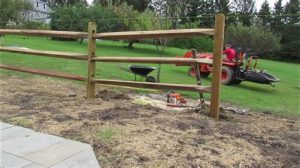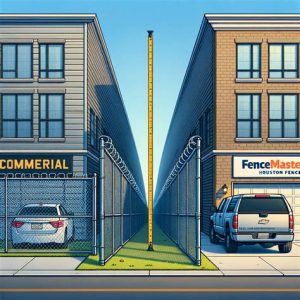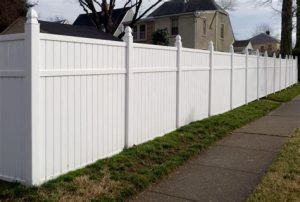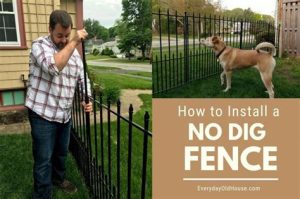Discover essential tips on fence posts, including selection, foundation strength, types, installation techniques, and maintenance for longevity. Boost your fencing knowledge today!When it comes to installing a wrought iron fence, fence posts play a crucial role in ensuring stability, durability, and aesthetic appeal. These unsung heroes not only support the weight of the entire structure but also determine the overall strength and longevity of the fence. In this blog post, we will explore the essential aspects of fence posts in wrought iron fence installation, from selecting the right type and understanding their foundation requirements to examining various installation techniques. Additionally, we’ll delve into maintenance practices to ensure they stand the test of time. Whether you’re a seasoned DIY enthusiast or a homeowner planning your first installation, understanding the role of fence posts will help you create a sturdy and stylish perimeter for your property.
Choosing the Right Fence Posts
When it comes to installing a rod iron fence, selecting the right fence posts is crucial for the overall stability and aesthetic appeal of the structure. The fence posts serve as the backbone of your fence, supporting the weight of the panels and ensuring that they remain upright over time. There are various factors to consider when choosing fence posts, including materials, height, and placement.
One of the most common materials for fence posts is wood, known for its natural look and affordability. However, its susceptibility to rot and pests may not make it the best choice for all environments. On the other hand, metal fence posts, such as galvanized steel or aluminum, offer longevity and resilience against harsh weather conditions. Additionally, it’s vital to consider the height of your fence posts. The right height will depend on the type of fence you’re installing and local regulations regarding fence heights.
Another important aspect to consider is the spacing of your fence posts. Proper spacing is essential to distribute the weight of the fence evenly and to maintain its strength. As a rule of thumb, fence posts should be spaced no more than 8 feet apart. This not only enhances the structural integrity of your fence but also allows for easy installation and maintenance. Choosing the right fence posts sets the stage for a successful rod iron fence installation, ensuring it stands the test of time while providing the security and style you desire.
Importance of Strong Foundations
The importance of strong foundations in any fence installation, especially in a rod iron fence, cannot be overstated. The stability and longevity of your fence largely depend on how well it’s anchored into the ground. A strong foundation ensures that the fence posts remain upright and secure, preventing sagging or leaning over time.
To achieve a robust foundation, it’s essential to understand the type of soil in your area. Different soils, such as clay, sand, or loam, react differently to moisture and weight, thereby affecting the integrity of your fence.
- Depth: Fence posts should be buried at least one-third of their height in the ground.
- Width: The diameter of the hole should be at least three times that of the post for adequate support.
- Concrete Setting: Using concrete to set your posts helps prevent movement caused by weather changes and ground settling.
Incorporating these elements into your installation will lead to a sturdier and more enduring rod iron fence, providing lasting value and security. Always remember, investing time and effort into the foundation now can save you from costly repairs in the future.
Types of Fence Posts
When it comes to installing a fence, the type of fence posts you choose can greatly influence the overall stability and aesthetics of your fencing structure. Understanding the different types available will help you make the best decision that fits your needs.
| Type | Material | Uses |
|---|---|---|
| Wooden Posts | Pine, Cedar, or Redwood | Residential Fences, Decorative Fencing |
| Metal Posts | Steel or Aluminum | Commercial Fences, High Security |
| Vinyl Posts | Vinyl Polymer | Low Maintenance, Residential Fencing |
| Concrete Posts | Reinforced Concrete | Heavy-duty Fencing, Extreme Weather Conditions |
Wooden posts are traditionally popular due to their natural appearance and versatility. They are perfect for residential fences and can be treated for durability against the elements.
Conversely, metal posts are ideal for those looking for strength and security. They work exceptionally well in commercial applications where fence durability is crucial.
For a low-maintenance option, consider vinyl posts. They offer a sleek look and resist the risk of rot or pest damage, making them an increasingly popular choice among homeowners.
Lastly, if you’re in an area subject to harsh weather, concrete posts may be your best option for long-lasting stability and support.
Installation Techniques for Fence Posts
When it comes to installing a fence, the installation techniques for fence posts play a crucial role in ensuring the strength and durability of the entire structure. Properly installed fence posts not only provide support but also enhance the overall aesthetic appeal of your yard.
- Digging the Right Depth: For most fences, it’s recommended that fence posts are buried at least one-third of their height underground. This offers better support against wind and pressure.
- Using the Correct Materials: Choose high-quality concrete or gravel for setting the posts. This ensures stability and reduces the chances of rotting or corrosion.
- Plumb Posts Precisely: Use a level to ensure that each post is perfectly vertical. This is crucial for both the visual alignment and structural integrity of your fence.
- Setting Time: Allow sufficient curing time for concrete (usually 24 to 48 hours) before attaching panels or rails to prevent movement.
- Securing with Braces: Consider bracing newly installed posts by using temporary support until the concrete has fully set.
Adopting these techniques will help in maximizing the life and stability of your fence, making the installation process smooth and effective. Proper preparation and care during installation can also save you money and time in future repairs.
In addition to these techniques, it’s essential to regularly check the condition of your fence posts after installation. Weather elements can affect their longevity, so routine inspections will help you address any issues promptly.
Remember, the role of fence posts is foundational to the success of your fencing project.
Maintenance and Longevity of Fence Posts
Maintaining your fence posts is essential for ensuring their longevity and effectiveness in providing security and aesthetic appeal. Proper care can prevent unnecessary replacements and extend the life of your fence.
- Regular Inspections: Check your fence posts regularly for any signs of wear and tear or damage from weather elements.
- Keep Moisture Levels in Check: Excessive moisture can lead to rotting in wooden posts, so ensure proper drainage around the area.
- Apply Protective Treatments: Use sealants or treatments specifically designed for fence posts to protect against the elements.
- Inspect for Insects: Wooden posts are susceptible to pests. Regularly check for signs of infestations.
Another critical aspect in maintaining the longevity of your fence posts is the installation technique used initially. Properly installed posts are less likely to warp or lean over time, ensuring they remain sturdy. If you notice any issues early on, it’s prudent to address them immediately to prevent further degradation.
By investing time in the maintenance of your fence posts, you can enjoy a longer-lasting fence. A well-maintained fence does not only offer physical security but also enhances the appearance of your property, making it more appealing to visitors and potential buyers alike.
Frequently Asked Questions
What is the primary purpose of fence posts in a rod iron fence installation?
The primary purpose of fence posts in a rod iron fence installation is to provide structural support for the fencing, ensuring it remains stable and upright.
How deep should fence posts be installed for a rod iron fence?
Generally, fence posts for a rod iron fence should be installed at least one-third of their height underground to ensure stability, though local regulations and soil conditions may vary.
What materials are commonly used for fence posts in rod iron fences?
Common materials for fence posts in rod iron fences include concrete, metal, and treated wood, each offering different durability and aesthetic benefits.
How can improper installation of fence posts affect a rod iron fence?
Improper installation of fence posts can lead to leaning or collapsing fences, misalignment, and increased maintenance costs over time.
Are there specific tools needed for installing fence posts in a rod iron fence?
Yes, common tools for installing fence posts include a post hole digger, level, sledgehammer, concrete mixer, and measuring tape.
What is the recommended spacing between fence posts in a rod iron fence?
The recommended spacing between fence posts in a rod iron fence is typically 6 to 8 feet, depending on the design and specific requirements of the installation.
Can I use pre-made fence panels with my rod iron fence posts?
Yes, pre-made fence panels can be used with rod iron fence posts, allowing for simplified installation and a uniform look, provided they are compatible in terms of size and design.





